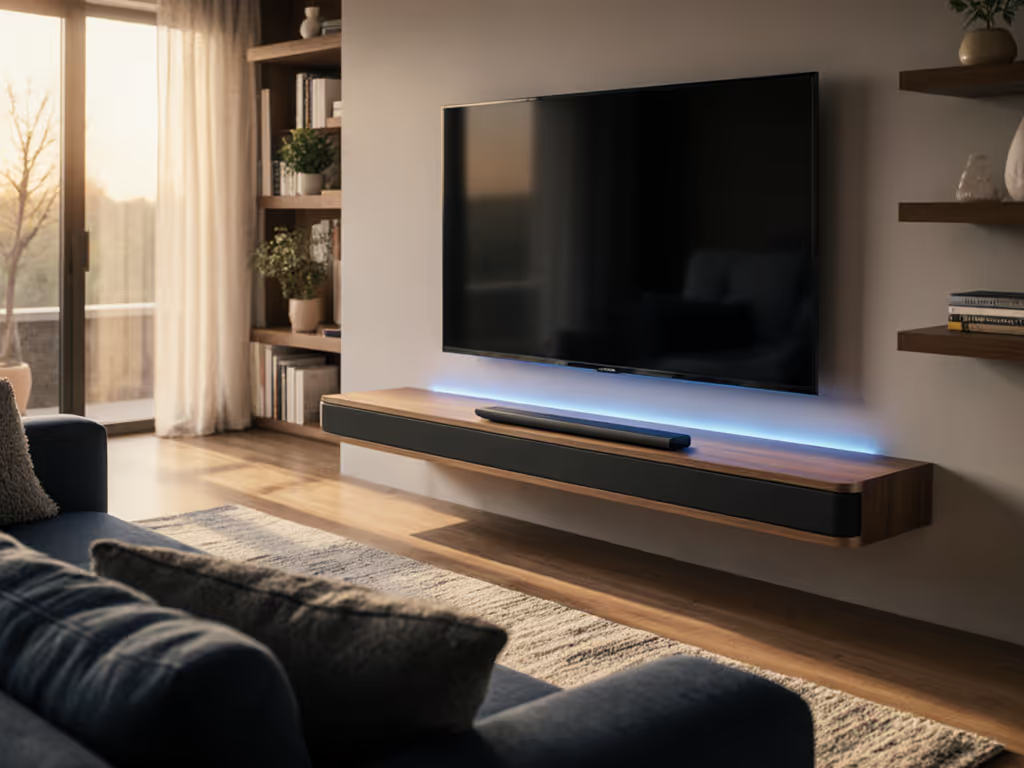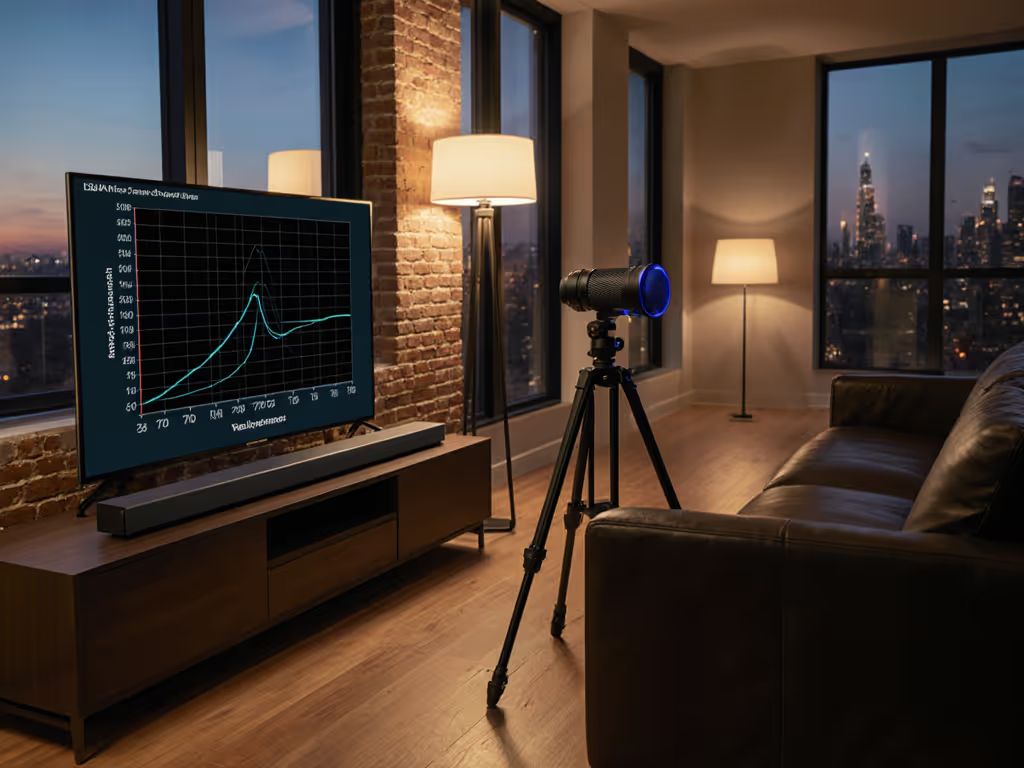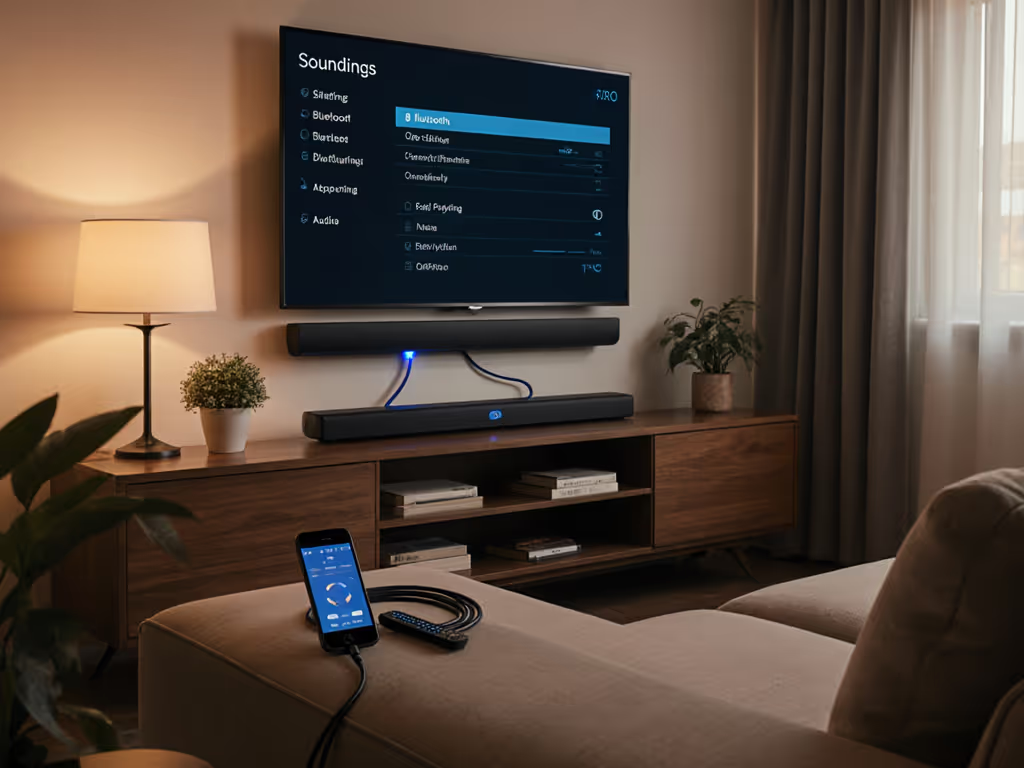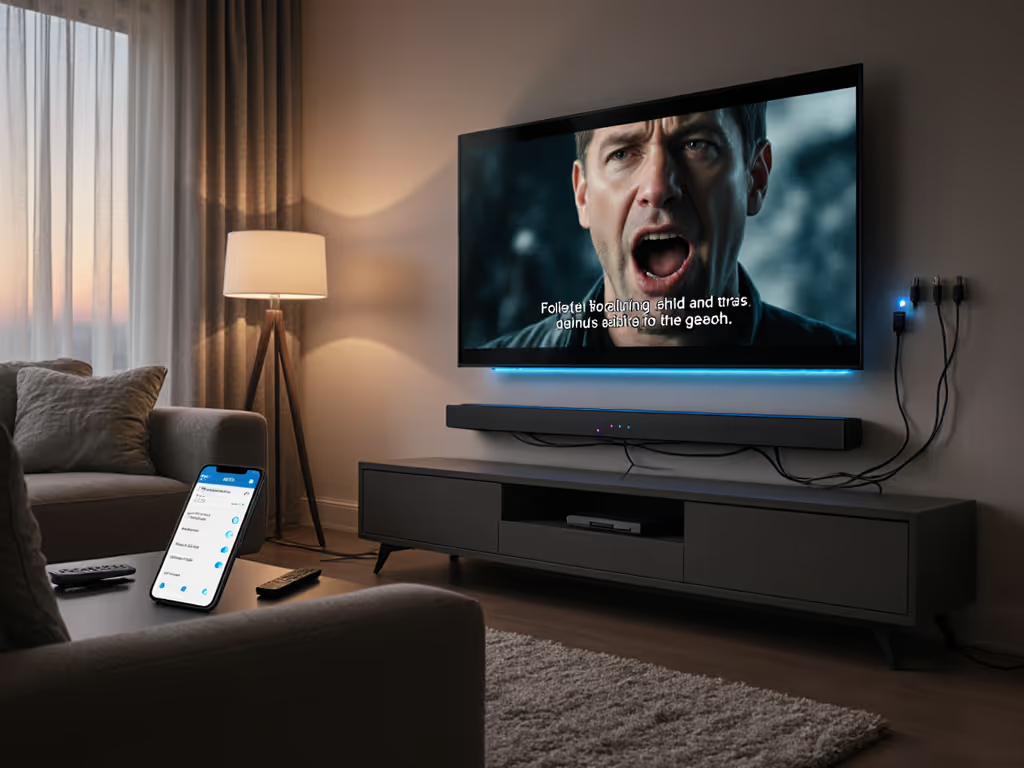
Soundbar Room Correction: Advanced Calibration for Premium Audio Performance

Soundbar room correction technologies transform how audio systems interact with your unique listening environment, using microphones and algorithms to counteract acoustic distortions. Advanced soundbar calibration goes beyond basic EQ adjustments, targeting room-specific issues like standing waves and reflective surfaces for cinema-grade coherence. This guide examines the science and methodology behind professional-grade optimization for residential setups.
What Constitutes True Room Correction vs. Basic EQ?
Basic EQ manually adjusts frequency bands to taste, while room correction analyzes spatial behavior through measured impulse responses. Systems like Dirac Live create a mathematical model of your room's transfer function, then apply inverse filtering to counteract nulls and peaks[3][7]. This tackles issues originating from:
- Boundary interference: Speaker-wall interactions causing cancellations
- Modal resonances: Low-frequency buildups in room corners
- Early reflections: First-bounce energy smearing transients
Advanced systems like Trinnov Optimizer even map 3D sound propagation using proprietary algorithms beyond standard FIR filtering[7].
Step-by-Step Professional Calibration Protocol
Pre-Calibration Environment Setup
- Acoustic preparation: Eliminate transient noise sources (AC units, appliances)
- Speaker positioning: Ensure unobstructed paths between transducers and listening area For room-perfect positioning tips, see our soundbar placement guide.
- Microphone setup: Use a measurement-grade mic with calibration file on a stand at primary listening height[3]
Measurement Execution
- Initiate test sweeps through companion software
- Capture multiple listening positions (minimum 3-5 locations)
- Validate measurement integrity via coherence plots
Post-Processing Workflow
mermaid
graph LR
A[Raw Measurements] -> B[Frequency Response Analysis]
B -> C[Time Domain Correction]
C -> D[Phase Alignment]
D -> E[Target Curve Application]
Prioritize correction below the Schroeder frequency (~200-300 Hz) where the room dominates, applying a gentle downward tilt above this threshold[1][8].
Optimization Strategies for Challenging Rooms
Open-Concept Layouts
Deploy multi-subwoofer configurations with distributed bass management to combat modal unevenness. Solutions like the Sonos Arc Ultra integrate spatially aware bass control when paired with dual subs[Affiliate Product].
Asymmetrical Spaces
- Apply channel-specific correction while preserving timbral balance
- Use boundary gain compensation for corner-loaded subs
- Implement near-field bass arrays for compact zones
Calibration Artifacts: Diagnosis and Mitigation
| Artifact | Cause | Solution |
|---|---|---|
| HF Roll-off | Overaggressive correction | Apply house curve with 1-2 dB/octave rise |
| Midrange Harshness | Reflection-dominated decay | Selective attenuation at 1-4 kHz |
| Bass Overhang | Incorrect phase alignment | Minimum-phase bass correction |
Maintenance and Recalibration Triggers
Conduct full recalibration when:
- Rearranging furniture affects more than 20% of the room volume
- Adding or removing major absorptive elements
- Seasonal humidity shifts exceed 30% for a sustained period
- Component changes in the signal path
Run routine verification measurements monthly to maintain EDID sanity-check across the chain [Author Lexical].
Advanced Feature Implementation
Dirac Live Bass Control
Manages multiple subwoofers through:
- Individual time alignment
- Cross-channel null filling
- Modal distribution optimization
Trinnov Elevation
Creates height virtualization through HRTF-derived spectral shaping, essential for Atmos content in low-ceiling environments[7].
"Route before room became our mantra, solving handshake issues before calibration transformed performance reliability" [Author Anecdote]
Proven techniques yield measurable improvements: In RTINGS testing, correction reduced group delay variance by 3.2 ms and improved spectral decay by 15 dB/300 ms[8]. For projector-based installations, maintain ARC hygiene through certified HDMI components to preserve calibration integrity during signal transmission [Author Lexical].
Related Articles


How to Set Up a Soundbar: ARC, Optical, Bluetooth Done Right

